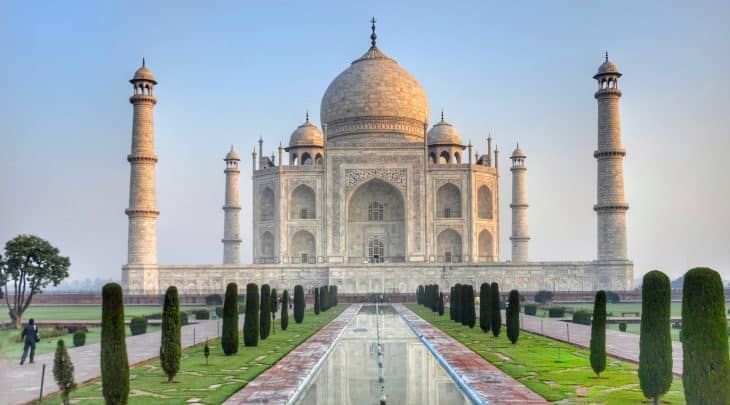
As one of India’s most known landmarks, the Taj Mahal has survived as a remnant of the Mughal Empire. Initially built to honor emperor Shah Jahan’s deceased wife, the Taj Mahal has stood as a symbol of a man’s devotion to his wife. However, the structure as a whole also demonstrates the power and influence of the fallen Mughal Empire. Despite being well-known, the Taj Mahal still has its own share of mysteries and conspiracies. Find out more about this historical site with these Taj Mahal facts.
- The Taj Mahal stands in the middle of a complex covering 170,000 m².
- Between 7 to 8 million people visit the Taj Mahal in a single year.
- The Taj Mahal stands 73 meters tall at its highest point.
- Indian tourists pay only 50 INR to visit the Taj Mahal.
- In contrast, foreign tourists must pay 1,100 INR to visit the Taj Mahal.
- Shah Jahan commissioned the construction of the Taj Mahal in 1631.
- Construction on the Taj Mahal began a year later in 1632.
- The construction of the mausoleum finished in 1648.
- It took until 1653 for work on the rest of the surrounding complex to finish.
- Jat invaders from Bharatpur looted the Taj Mahal in the 18th Century.
- The Taj Mahal complex began falling into disrepair by the late-19th Century.
- A restoration project launched by the British Viceroy, Lord Curzon, repaired the complex by 1908.
- The Indian government disguised the Taj Mahal in WWII to prevent Japanese bombers from possibly targeting it.
- The Indian government again disguised the Taj Mahal during wars with Pakistan in 1965 and 1971 to keep enemy bombers from targeting it.
- Storms damaged the Taj Mahal in 2018 and 2020.
- Records estimate it took 22,000 people and 1,000 elephants to build the Taj Mahal.
- Tourists can only stay at the Taj Mahal for up to 3 hours at a time.
- The Taj Mahal’s mosque holds prayers every Friday from 12 to 2 in the afternoon.
- Tourists can go night viewing at the Taj Mahal during full moons.
- The Taj Mahal closes during the month of Ramadan.
The Taj Mahal started as a memorial.
Shah Jahan, fifth Emperor of the Mughal Empire, had the Taj Mahal built as a memorial for his wife. That was Mumtaz Mahal, Empress Consort of the Mughal Empire, who died giving birth to their 14th child, Gauhara Begum. Official court records of the empire show that the Emperor wanted to use the Taj Mahal to demonstrate his love and grief for his late wife. This is definitely one of the Taj Mahal facts that shows devotion through the ages.
The Taj Mahal drew inspiration from older buildings.
In general, the Taj Mahal’s design shared elements with preexisting Persian and Mughal architecture. Specific inspiration also came from the Gur-e-Amir, the mausoleum of Tamerlane in Samarkand, Uzbekistan. Despite never ruling over the Mughal Empire, Tamerlane was also an ancestor of the Imperial Family of the Mughal Empire. Other inspirations for the structure also included Emperor Humayun’s tomb and the Jama Masjid mosque.
The Taj Mahal inspired a new evolution for Mughal architecture.
Before its construction, important buildings like mosques and palaces tended to use red sandstone. With the Taj Mahal, however, Shah Jahan wanted a new and brighter appearance, making heavy use of white marble and semi-precious stones. In doing so, he started a new trend for Mughal architecture, which continued past the Taj Mahal’s completion. Now, there’s one for admirable Taj Mahal facts.
The Taj Mahal’s color can change based on the light of the time of day.
Now here’s an especially interesting example of Taj Mahal Facts: Its natural white color only dominates during the daytime. At dawn and sunset, the light actually causes the Taj Mahal to appear pink. In the light of the Moon at night, the Taj Mahal appears as though it’s made from gold.
The Taj Mahal’s construction materials came from all over the world.
As its foundation, the Taj Mahal uses marble from the city of Makrana in India, while its jasper came from Punjab. However, Shah Jahan also imported jade and crystals from China for the Taj Mahal, as well as turquoise from Tibet. From Afghanistan came lapis lazuli, while sapphires were imported from Sri Lanka.
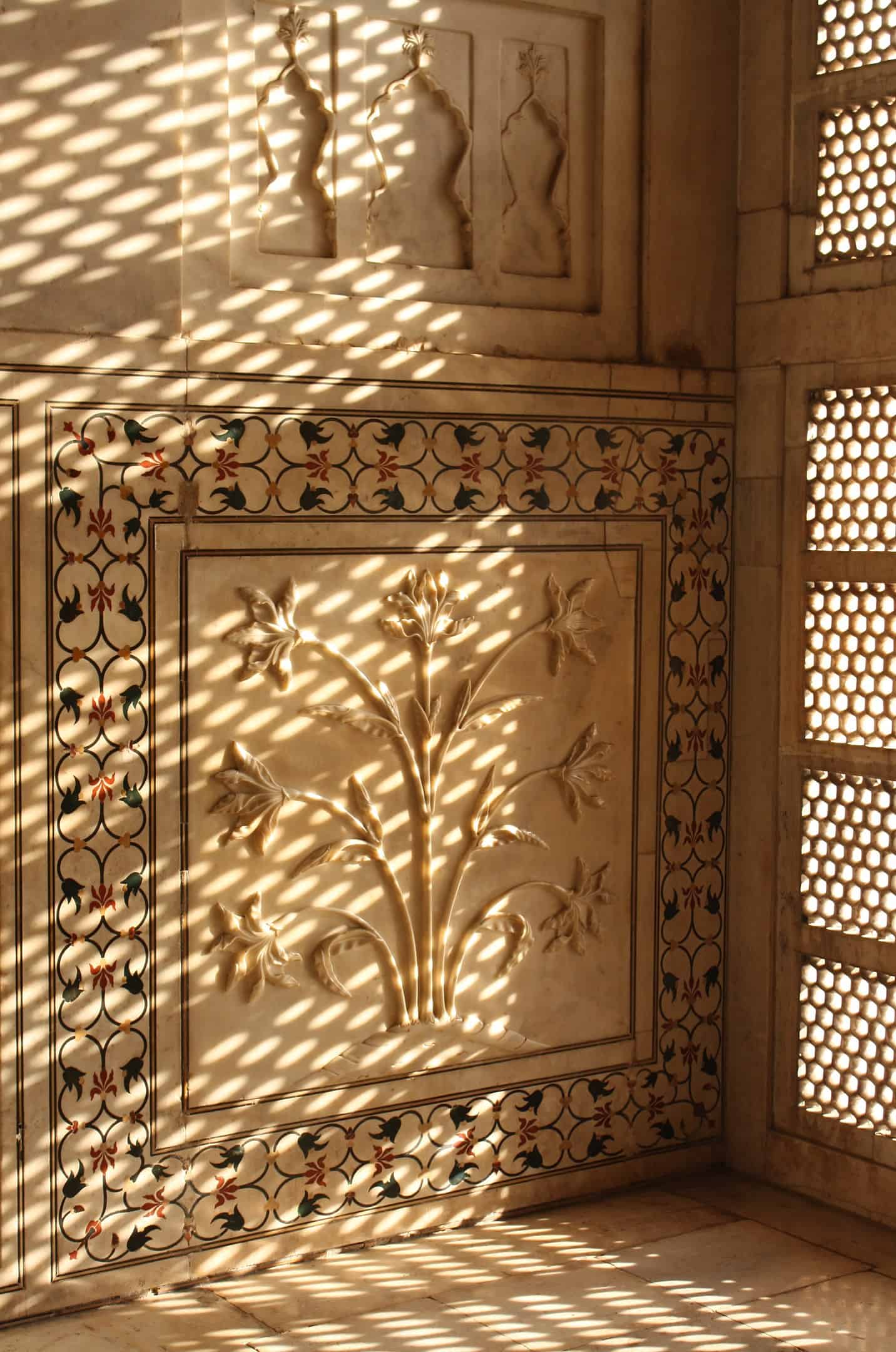
The Taj Mahal cost millions to build.
According to the Mughal Empire’s own records, it took 32 million rupees to construct the Taj Mahal. In current amounts, that’s equivalent to 52.8 billion INR, or $827 million.
Shah Jahan shares his wife’s tomb.
Naturally, Mumtaz Mahal was the first to get buried at the Taj Mahal. Shah Jahan didn’t die until 1666, so he didn’t join his wife for decades. After his passing, his son and successor, Emperor Aurangzeb, had Shah Jahan buried next to Mumtaz Mahal.
The Emperor and Empress have 2 sets of tombs.
The first set is the official one, located in the main chamber of the Taj Mahal. However, these tombs are actually empty, existing only for appearance’s sake. The Emperor and Empress’ bodies lie in the second burial chamber, in a lower level of the Taj Mahal.
This chamber is also smaller and simpler compared to the main one, out of Muslim belief. Specifically, Islamic doctrine frowns on rich and elaborate graves, hence the simple tombs of the Emperor and his wife.
The Taj Mahal’s design is specifically meant to protect the tombs.
As long as the Taj Mahal stands, rain and other natural events can’t directly affect the tombs. However, the design of the Taj Mahal actually takes into account the possibility of earthquakes and similar events causing it to collapse.
Specifically, the Taj Mahal’s structure makes it so that if it ever collapsed, it would still leave the tombs intact. Now, there’s one for clever Taj Mahal facts.
Shah Jahan didn’t originally plan to share the Taj Mahal with his wife.
Instead, Emperor Aurangzeb only made that decision out of his unwillingness to build a separate tomb for his father. This led to a partial reconstruction of the Taj Mahal’s tombs, in order to include a second sarcophagus for his father’s remains.
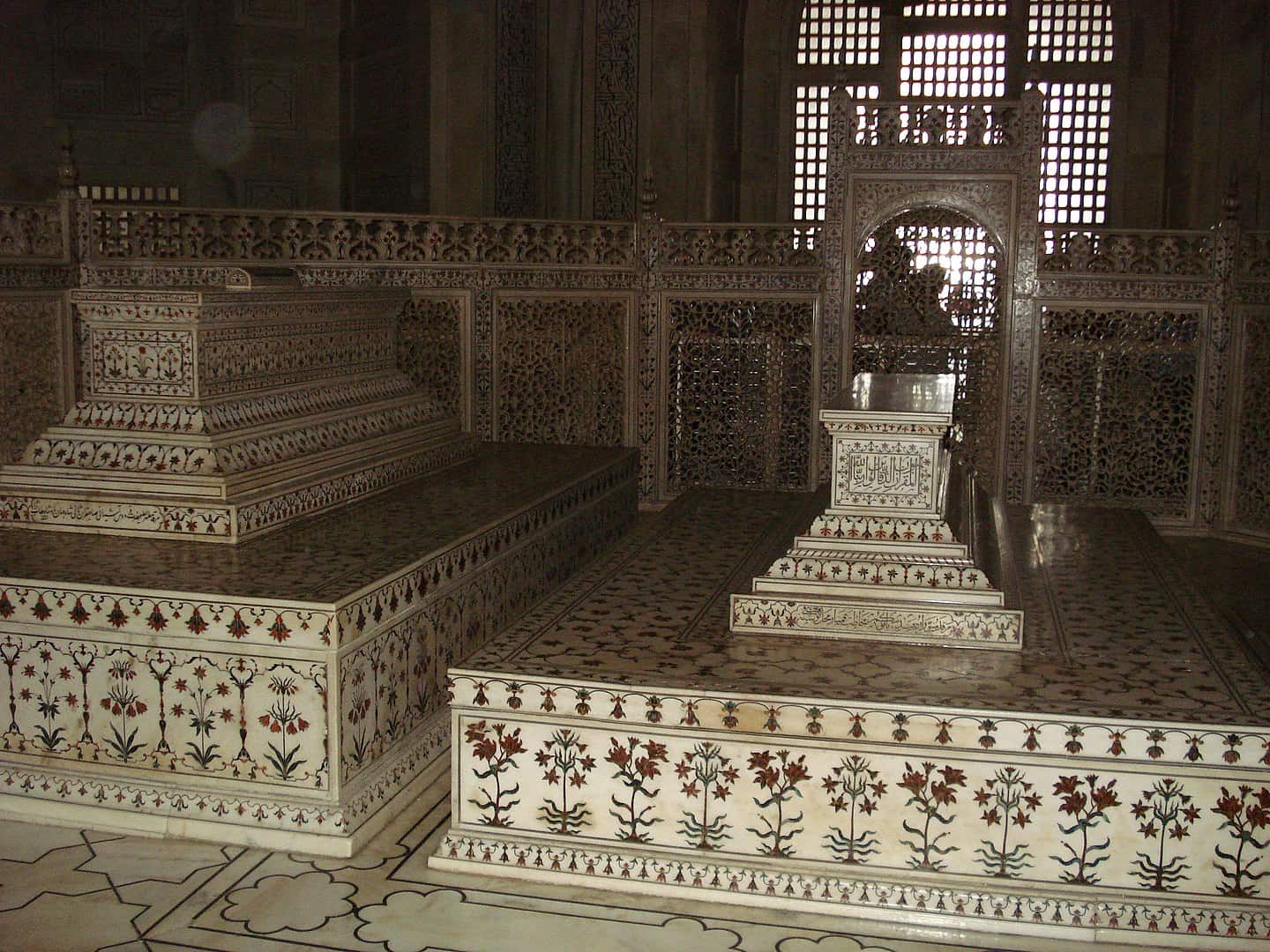
The Taj Mahal’s outer decorations are heavily influenced by Islam.
Specifically, Islam prohibits humanoid forms in art and architecture, considering it a form of idolatry. With that, the Taj Mahal’s decorations include inscriptions, geometric designs, or floral motifs instead of human symbols. Generally, the various inscriptions themselves largely draw on passages from the Koran.
Shah Jahan especially honored the man behind the inscriptions of the Taj Mahal.
Abdul Haq impressed the Emperor with his scribing skills so much that he gave the man the title, Amanat Khan. More than that, his name was also inscribed on the Taj Mahal itself, literally attributing the inscriptions of the Taj Mahal to him by name.
Many gardens surround the Taj Mahal.
Raised pathways for visitors divide these gardens into 16 sunken flower beds. The gardens also feature a reflecting pool facing the Taj Mahal, again raised above the surrounding flower beds. The pool itself references a passage in the Koran, about a Tank of Abundance promised by God to the prophet Muhammad.
The Taj Mahal’s gardens currently have a different design from the original one.
This results from a restoration effort launched by the British Empire at the start of the 20th Century. At the time, the Mughal Empire had long since fallen, and India had become a British colony. This left the responsibility of maintaining the Taj Mahal to the British. As part of that, their restoration of the Taj Mahal’s gardens resulted in something closer to formal lawns in Britain than what’s expected of Indian design.
Two buildings face the Taj Mahal from east and west.
Facing the Taj Mahal from the west is a mosque, while a jawab lies in its east. The name comes from how historians think that the jawab merely balances the mosque on the other side of the complex. However, other historians argue that the jawab was actually built and used as a guesthouse. Both buildings have their backs to the complex’s western and eastern walls, and share the same basic design.

The Taj Mahal Complex only has 3 walls.
The fourth side of the complex faces the Yamuna River, and was thus left unwalled by the builders. All 3 walls of the complex feature red sandstone as the main building material, which is similar to earlier Mughal architecture compared to the Taj Mahal. Red sandstone was also used to build the complex’s mosque and the jawab.
The Taj Mahal has a marble gatehouse.
The gatehouse’s arches mirror the arches used in the design of the Taj Mahal itself. The inscriptions decorating the gatehouse are also shared with those of the Taj Mahal. However, the general design of the gatehouse follows earlier designs of Mughal architecture, with the same geometric decorative patterns as those of the complex’s mosque and the jawab.
Early Europeans made up many stories about the Taj Mahal.
Historians reject each and every one of these stories as untrue and without any evidence. One story claims that Shah Jahan had the builders, architects, and engineers who worked on the Taj Mahal tortured and killed afterward. Another story states that the British once planned to destroy the Taj Mahal and sell off its marble.
The Taj Mahal may have had a sister building on the other side of the Yamuna River.
Across the Yamuna River, a similar structure called the Moonlight Garden has been associated with the Taj Mahal. Because of their similarities, some people believe that the Moonlight Garden exists as the black marble counterpart to the Taj Mahal. However, excavations revealed that the structure was originally white, and only turned black from age.
That said, the reconstruction of the reflecting pool in the Moonlight Garden adds further evidence to the theory, given Shah Jahan’s historical obsession with symmetry.
Other important tombs surround the Taj Mahal.
Other tombs near Taj Mahal include those of the other wives of Shah Jahan. However, none of them come close to the Taj Mahal. Mumtaz Mahal’s favorite servant was also granted the honor of having their tomb nearby, out of their devoted service to the late Empress.
The British once looted the Taj Mahal.
One of the more unfortunate Taj Mahal facts is that the British looted this landmark after Indians revolted against them in 1857. Amidst the conflict, British troops put the rebels down and stripped the Taj Mahal of its precious decorations.
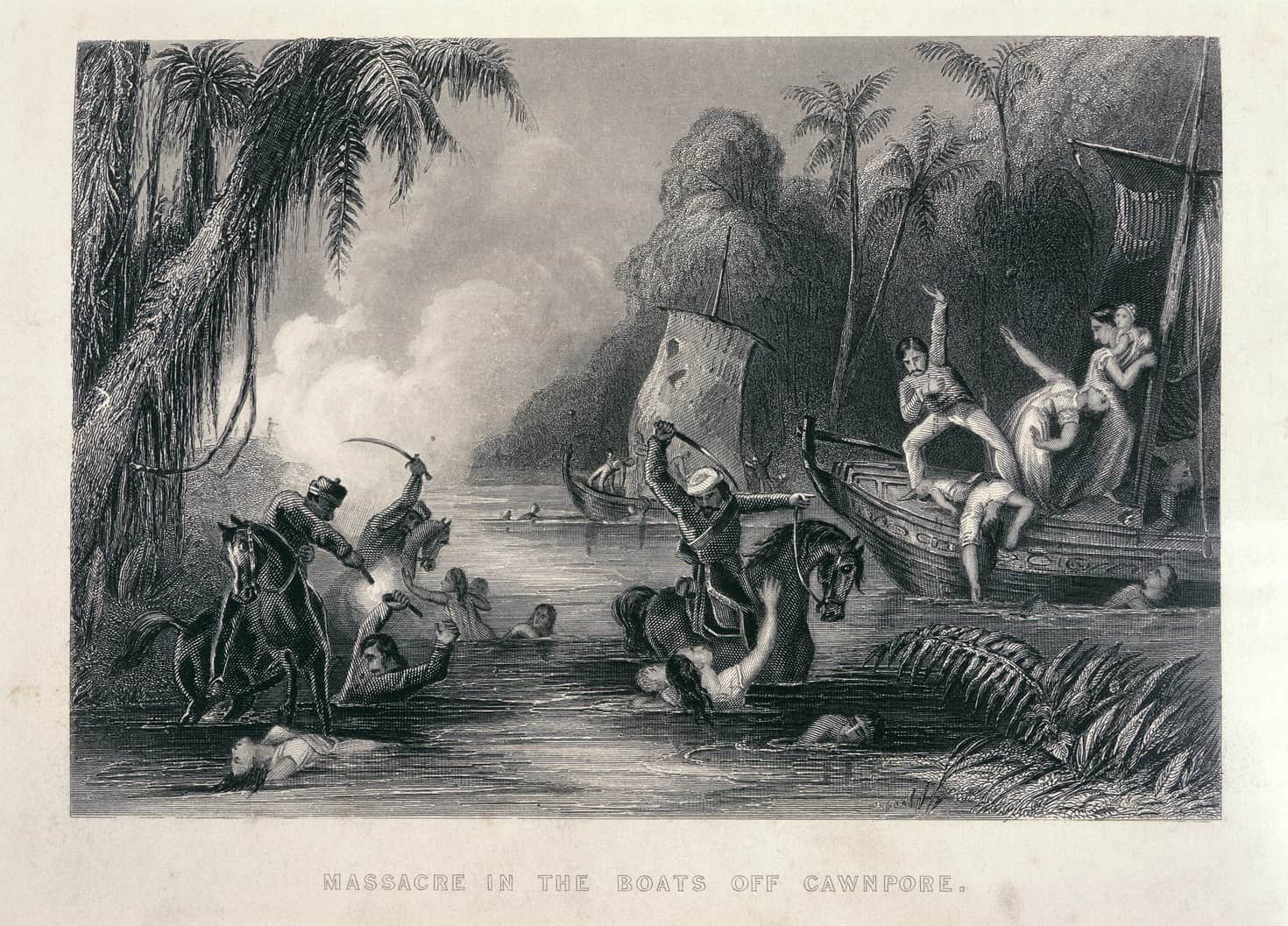
Hindu nationalists have tried to revise history with regard to the Taj Mahal.
In particular, these nationalists claim that the Taj Mahal was actually built on top of a Hindu temple dating back to the 12th Century. However, historians reject this claim, as there’s no evidence for it. In 2000, the Indian Supreme Court even had to reject a petition by Hindu nationalist P.N. Oak to officially declare that a Hindu temple once stood where the Taj Mahal now stands. Later on in 2005, the Allahabad Supreme Court later rejected a similar petition.
Pollution is a major concern for the Taj Mahal.
In particular, the Taj Mahal is vulnerable to acid rain caused by sulfur dioxide and nitrogen oxide from burning fossil fuels. When these compounds mix with water in the air, they form sulfuric and nitric acid.
Both are bad enough on their own, but given the Taj Mahal’s marble construction, the effect only worsens. Both acids react stronger against marble, eating it away faster than they would other materials.
Pollution once started changing the Taj Mahal’s color.
Throughout history, chemicals and deposits in rainwater began staining the Taj Mahal’s white walls a dirty yellow-brown. This led the Indian government to declare the Taj Trapezium Zone (TTZ) around the Taj Mahal. Covering an area of 10,400 km², the local government has mandated strict regulations on burning fossil fuels and other polluting activities within the TTZ.
Caretain vehicles aren't allowed near the Taj Mahal.
Vehicles that burn fossil fuels like cars and buses are not allowed within 500 meters of the Taj Mahal. However, bikes and other vehicles that don’t need fuel aren’t covered by the limitation.
Dropping water levels is another major concern for the Taj Mahal.
Currently, the groundwater level of the Yamuna river basin has fallen at a rate of 1.5 meters per year. This, in turn, causes the local geography to change, with the ground sinking to fill spaces once filled with water. As of 2010, this change ahs caused cracks in parts of the Taj Mahal, and caused its surrounding towers to develop an incline.
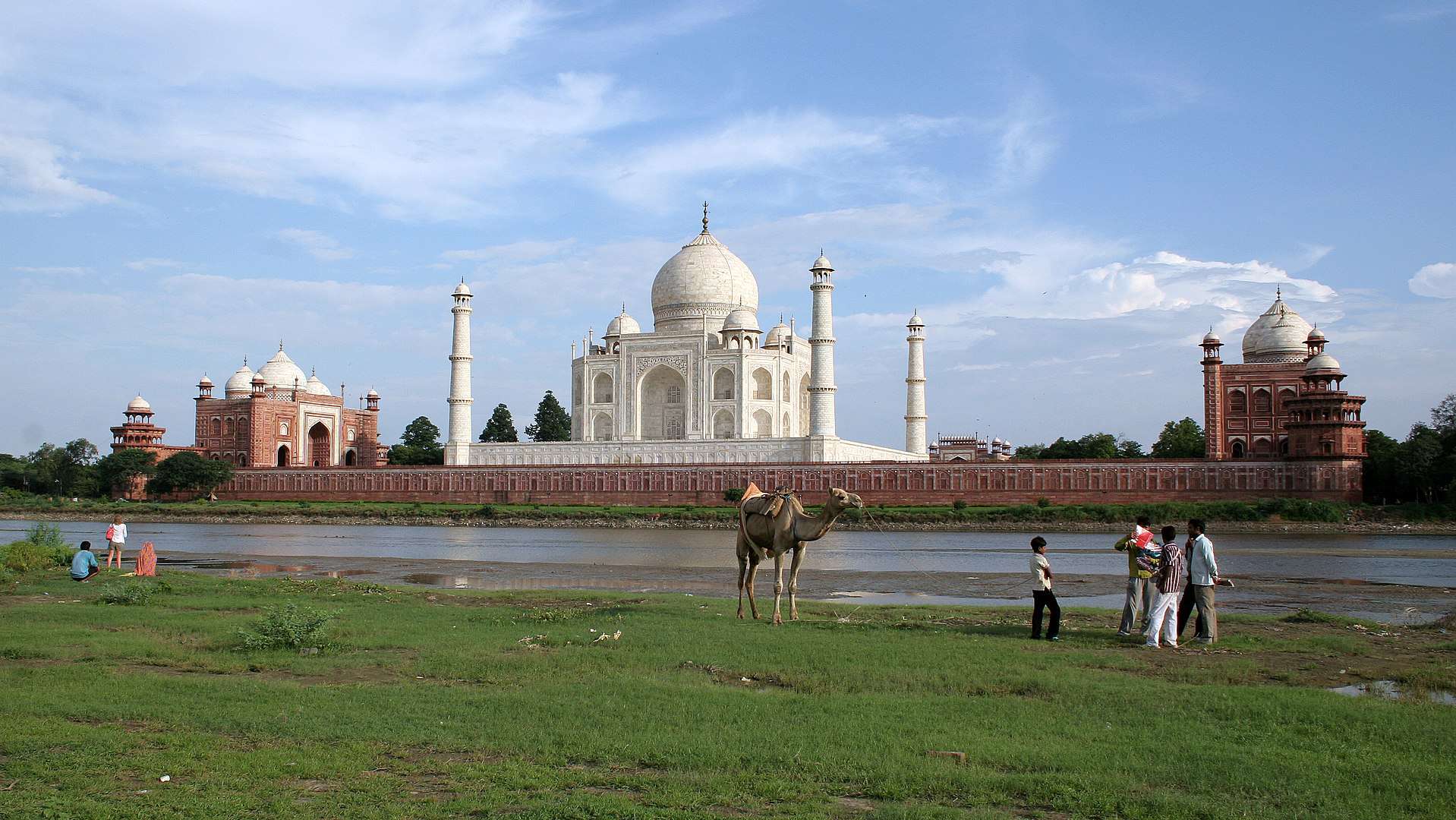
The Taj Mahal’s wooden foundation is also a cause for concern.
For centuries, the moist earth of the Yamuna river basin actually helped keep the foundations solid and strong. However, the earth dries up as the Yamuna river basin’s groundwater level drops. This, in turn, causes the wooden foundations to weaken and rot, potentially destabilizing the entire structure.
Visiting dignitaries commonly visit the Taj Mahal when in India.
Among US Presidents alone, Dwight D. Eisenhower, Jimmy Carter, George H.W. Bush, Barack Obama, and Donald Trump have all visited the Taj Mahal during their terms in office. Russian President Vladimir Putin has also visited the Taj Mahal, as did the British Princess Diana before her death. Even Mark Zuckerberg, founder and owner of Facebook, has visited the Taj Mahal.
The Taj Mahal has more symbolism to it than most assume.
Usually, the Taj Mahal is only seen as a symbol of Shah Jahan’s love for his wife. However, historians also consider the other aspects of the Taj Mahal’s construction. Given the cost and effort to build it, the scale of the building, and the luxury of its design, historians believe that the Taj Mahal demonstrates the power and grandeur of the Mughal Empire.
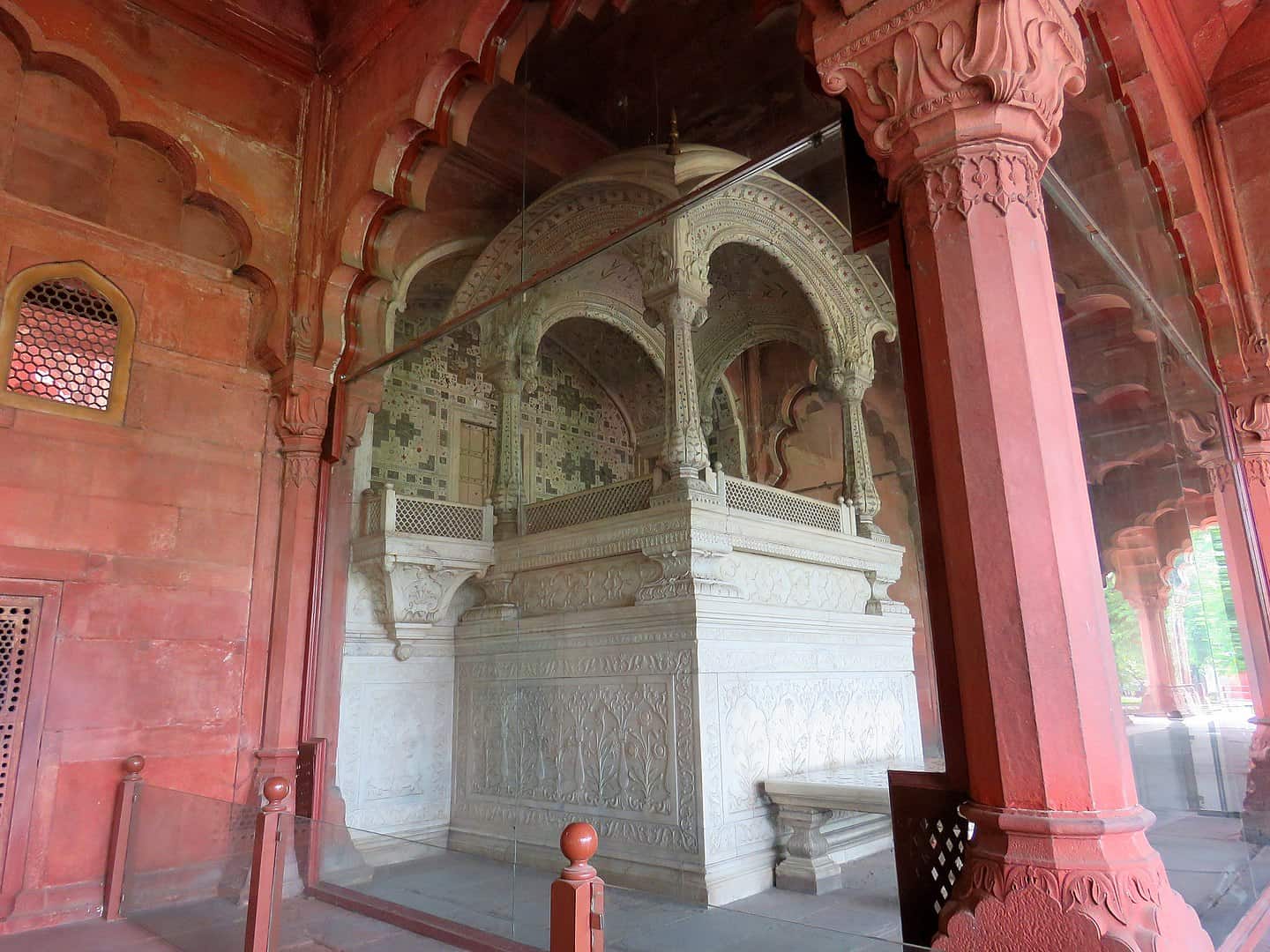
Lego sells a model of the Taj Mahal.
It also surpasses any Star Wars or Marvel model kit in the number of pieces in the model. Unsurprisingly, the Lego model uses no less than 6000 pieces to recreate the grand image of the Taj Mahal.
Was this page helpful?
Our commitment to delivering trustworthy and engaging content is at the heart of what we do. Each fact on our site is contributed by real users like you, bringing a wealth of diverse insights and information. To ensure the highest standards of accuracy and reliability, our dedicated editors meticulously review each submission. This process guarantees that the facts we share are not only fascinating but also credible. Trust in our commitment to quality and authenticity as you explore and learn with us.
